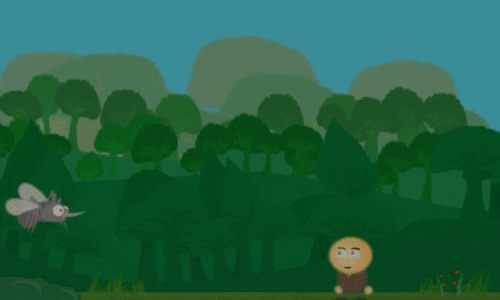Casual & Hardcore Players: Unite
One thing I think a lot about when it comes to game design is accessibility. It's something that can and does come in many forms, but more specifically, today we're going to be discussing the topic of accessibility in relation to game difficulty.
I grew up with games such as Baldur's Gate - games that didn't really do a lot of handholding, and could be very unforgiving, especially on harder difficulties. As such, I grew up to appreciate a good challenge (or sometimes just straight up beating). However, we all play games for different reasons, and I especially believe this to be true for games with as diverse gameplay offerings as RPGs. Some people may enjoy the same games I do, but not necessarily for the harsh difficulty; they may be in it for something else, such as the narrative, or simply exploring the game world.
There's also the fact that even people like me, who do enjoy hard games simply don't have as much time anymore as when we were kids happily gaming away. And while I still enjoy those hard games, I simply don't have the time to go through them anymore. Should that mean I, or anyone else, should be excluded from enjoying other aspects of such a game? I don't think so.
This is why I'm designing Ronn For Your Life to be very customizable (in several ways, actually, but more on that later) - especially when it comes to difficulty.
The game will offer 4 different standard difficulties with varying scaling of things like enemy damage, reaction time, movement speed and more. You will have your typical easy, normal and hard difficulties, as well as an "extreme" difficulty that will alter the game in a few extra ways intended only for the most masochistic of elite players.
But to contrast this, the game will also offer a so called "Story Mode", which will be separate from the difficulty settings.
How Does 'Story Mode' Work?
The "Story Mode" is an option you can enable and disable at any time, and it will work on a savegame level (separately from an actual user profile).
When you enable it, the game will warn you that this will render you unable to obtain certain achievements, even if you disable it at a later point.
With story mode enabled, all enemies in the game world will turn to petrified statues of themselves - which can be ignored completely, or crushed into rocky powder with your basic attacks. This change works instantly - so you can be in the midst of an army of living, raging enemies, seconds away from undoing you - then you quickly go to your menu, switch on "Story Mode" and go back - and you will now be in the midst of an army of statues simply just standing there. Should you go back and disable the mode, the army will instantly be back to life.

Disclaimer: Programmer art for demonstrative and laughing purposes
The idea here is that you can actually walk past every single enemy in the game if you so desire, only experiencing the dialogue, exploring the landscape for secrets etc. - or, in a very different type of scenario, you can actually be playing through the game on the "extreme" difficulty, but then there's just this one annoying enemy you can't seem to get past, and rather than wasting more time, you switch on "Story Mode" just for this single encounter, and then go back to the extreme difficulty after that. Naturally, for the purists out there, this will still exempt the "Story Mode" player from any achievements related to playing through on a hard difficulty etc., but this way, you can tailor you gameplay experience in terms of difficulty on the fly to an extreme degree.
When it comes to boss fights where story and/or dialogue plays into the encounter, instead of turning the enemy to stone, the story mode will simply skip past the battle encounter and pick up where the next story bit would unfold - so say you have a little heart to heart with a boss both before and after you defeat him, then the story mode will have you talking to the boss, then after the pre-battle dialogue ends, the story mode will cut straight to the post-battle dialogue, where the boss will be in his 'defeated' state.
This in no way means that the game won't be for 'hardcore' players as well - the 'extreme' difficulty will be rage inducingly frustrating, and to top it off, there will be achievements that are designed specifically for the utmost hardcore players that will prove an insane challenge to just about anyone. This just means that more types of players will be able to enjoy the game in more ways, for whatever reason they may enjoy.